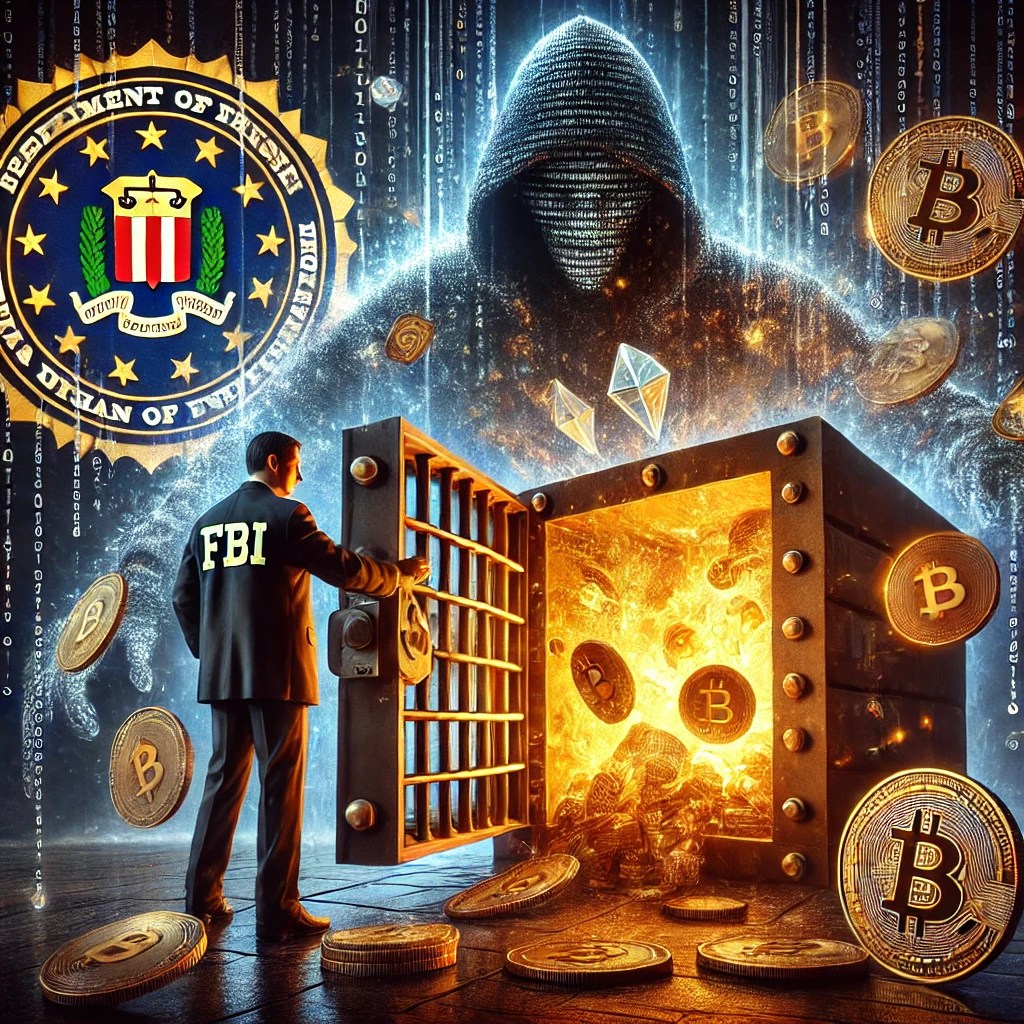In an interconnected digital world, the battle against cybercrime requires collaborative international efforts. Recent developments underscore this need as the U.S. Department of Justice (DOJ) intensifies its actions against cyber threats, focusing on a significant case involving illicit cryptocurrency activities. In a groundbreaking move, the DOJ has taken steps to seize over $24 million in digital assets linked to Rustam Rafailevich Gallyamov, a Russian national accused of orchestrating global ransomware operations through the notorious Qakbot malware. This action highlights the critical importance of cross-border cooperation in combating cybercrime.
The DOJ’s Strategic Move Against Cybercrime: Seizing Illicit Cryptocurrency
From Cyber Intrusions to Global Ransomware Operations
In a strategic effort to dismantle cybercriminal networks, the DOJ has announced charges against Rustam Rafailevich Gallyamov. According to federal prosecutors, Gallyamov, based in Moscow, allegedly spearheaded the Qakbot malware’s operations. This sophisticated malware, first introduced in 2008, is designed to infiltrate computer systems globally, paving the way for high-stakes ransomware attacks. Notorious ransomware variants such as REvil, Conti, Black Basta, and Cactus have been deployed using Qakbot’s infrastructure.
The indictment claims Gallyamov received a portion of the ransom payments obtained through these attacks. This action marks a part of a broader international initiative, involving cooperation between law enforcement agencies across the U.S., Europe, and Canada, aimed at disrupting cybercrime.
Since 2019, Gallyamov’s operations have reportedly expanded, leading to the compromise of thousands of systems and the creation of a vast botnet network. These compromised systems were subsequently handed over to ransomware operators. A significant development occurred in August 2023 when a U.S.-led task force successfully dismantled the Qakbot network, seizing substantial cryptocurrency assets, including 170 BTC and millions in stablecoins like USDT and USDC. Despite this, Gallyamov and his associates allegedly pursued alternative strategies, such as “spam bomb” techniques, to continue their illicit activities.
By 2025, these cybercriminals continued to target organizations within the United States, deploying ransomware like Black Basta and Cactus. The DOJ’s complaint highlights how these new tactics were used effectively to exploit system vulnerabilities. Further investigations led to another successful seizure by the FBI in April 2025, reclaiming over 30 BTC and $700,000 in stablecoins.
International Collaboration in Cybercrime Mitigation
The DOJ’s civil forfeiture complaint aims to formalize the recovery of over $24 million in illegally acquired crypto assets. The ultimate objective is to return these funds to the victims, showcasing a relentless international campaign against cybercriminals. This initiative is supported by the FBI’s field offices, Europol, and cybersecurity agencies from France, Germany, and the Netherlands, as well as other nations.
This concerted effort is pivotal in the rapid identification and disruption of organized cybercriminal activities. Assistant U.S. Attorneys from the Central District of California, alongside DOJ officials from the Computer Crime and Intellectual Property Section, are leading the prosecution efforts.
Public statements by DOJ and FBI representatives reaffirm their dedication to dismantling global cybercrime infrastructures. They emphasize using every available legal tool, including indictments, asset forfeitures, and international partnerships, to bring justice to perpetrators and restore losses to victims. U.S. Attorney Bill Essayli highlights this commitment, noting the significance of reclaiming more than $24 million in digital assets to compensate victims.
What is Qakbot Malware?
Qakbot is a sophisticated form of malware that first appeared in 2008. It is primarily used to infiltrate computer systems, allowing cybercriminals to execute ransomware attacks. Qakbot serves as a key tool in global cybercrime operations due to its ability to form extensive botnets and facilitate unauthorized access to compromised systems.
How does international collaboration enhance cybercrime prevention?
International collaboration significantly strengthens cybercrime prevention by facilitating swift information exchange, joint operations, and resource sharing among nations. This global approach maximizes efforts to identify, disrupt, and prosecute cybercriminals, while also providing support and restitution to victims across different jurisdictions.
What are the benefits of legal actions such as civil forfeiture in cybercrime cases?
Civil forfeiture allows authorities to seize and later redistribute assets obtained through illegal activities. In cybercrime cases, this legal measure not only disrupts criminal operations by depriving them of resources but also helps compensate victims by recovering and reallocating illicit gains.
By understanding such cybercrime dynamics, stakeholders can be better equipped to navigate the challenges and complexities of digital security in an ever-evolving landscape.

